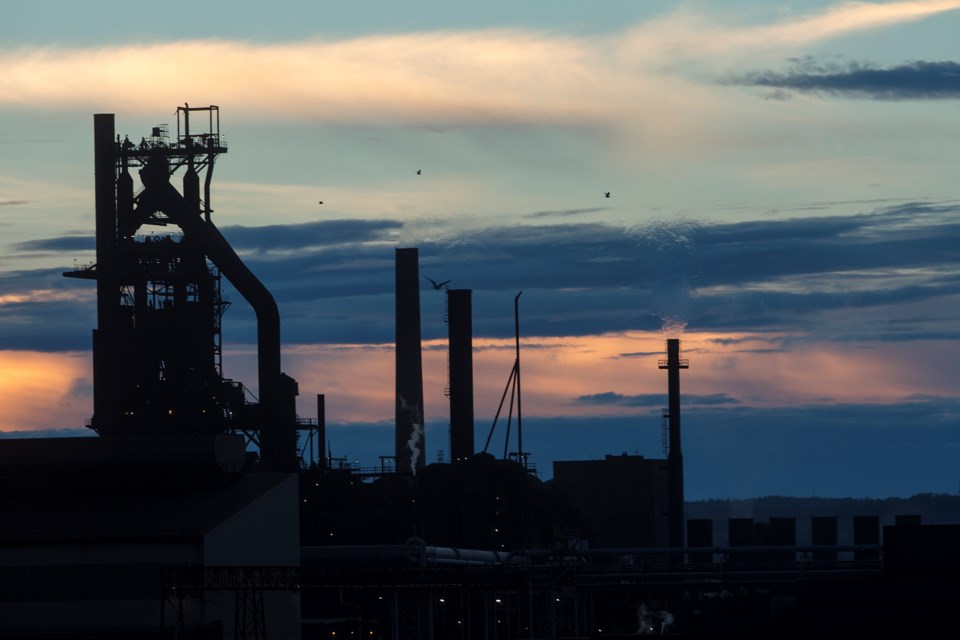A $120-million investment in our community is a very big thing.
Precious little, however, has been disclosed about Algoma Steel's $120-million plate mill modernization upgrade.
Largely overshadowed by Algoma’s even-bigger, $700-million transition to electric arc steelmaking, most media references to what's been going on at the plate mill have been one-liners.
The electric arc furnace initiative is the most expensive construction project in Sault Ste. Marie's history. The project is "on schedule and on budget," investors were assured earlier this month.
The plate mill rebuild, however, is another thing entirely.
Bedevilled by technical problems, that upgrade is bottom-dragging seven months behind schedule and won't be completed until June 2023.
The delay is one cause cited for an 11.9 per cent drop in recently announced first-quarter shipments: 537,524 tons compared to 610,057 during the same period last year.
The average realized price of steel rose 37.8 per cent over last year, so the drop in shipments received little scrutiny, given the strong bottom line.
But Rajat Marwah, Algoma's chief financial officer, is cautioning that upcoming shipments for the fiscal second quarter will be similarly affected.
"Our plate mill is taking longer, so we will see less volume getting produced and shipped in this quarter on the plate side," said Marwah, during an investor presentation this month.
"So we were saying a month-long outage, which probably has taken us additional six to eight weeks to ramp up, or will take six to eight weeks to ramp up. So we'll see that impact coming in the September quarter...The volume will be lower just because of the plate mill."
Algoma Steel's plate mill is the only Canadian producer of discrete plate steel – a product used to make Royal Canadian Navy warships (HMCS Toronto and HMCS Halifax) as well as bridges (Champlain Bridge, Bluewater Bridge), buildings (Pearson International Airport, Rogers Centre, GFL Memorial Gardens) and wind turbines across the province.
The company's $120-million investment will allow wider plate products, superior flatness and surface quality, and better thickness capacity.
The plate mill upgrade is being done in two phases.
Here's how Marwah described those phases in early March to the BMO Capital Markets Global Metals and Mining Conference in Hollywood, Florida:
Phase I - Quality Focus
Completion planned for October 2021 for installation and commission of the following upgrades:
- new primary de-scaler (improves surface quality)
- automated surface inspector system (detects and maps quality)
- new hot leveler (improves flatness)
- automation upgrade of the 166 mill (expands grade offering)
Phase II - Productivity Focus
Completion planned for October 2022 for installation and commissioning of the following upgrades:
- onboard descaling system upgrade for 2Hi and 4Hi
- mill alignment and work roll offset at the 4Hi
- 4Hi DC drive upgrade
- in-line plate cutting including new cooling beds coupling the plate mill and shear line, dividing shear and new plate piler
The plate mill upgrade has been contracted out to the Buttrio, Italy-based Danieli Group, which designed and delivered Algoma's flagship Direct Strip Product Complex in the mid-1990s.
Danieli is also the sole technology supplier for Algoma's transition to electric arc steelmaking.
As recently as May 26 of this year, Algoma Steel was tweeting that its plate mill project was on track:
https://twitter.com/algomasteelinc/status/1529893206636351488?s=21&t=sEzAONqs5Xf1ycWR026b6g
"We completed the first phase of our two-phase plate mill modernization project in June 2022, with expected quality being achieved," Algoma's president and chief executive officer Michael Garcia told investors this month.
"The second phase, initially expected to be completed in November, has been extended to June 2023 to support our customers impacted by a longer-than-anticipated start-up, due to automation issues during the first phase."
"Further, by extending the timeline we are better positioned to apply learning from the first phase to the second phase outage to ensure seamless execution," Garcia said.
Marwah pointed out that Algoma's plate mill is actually a combination mill. "It produces strip as well as plate. And when the mill is out it affects both sheet and plate. So we have seen that impact in the first quarter, as the numbers are and we will see that a little bit of impact coming in the September quarter as well, because the plate and strip is taking longer to ramp up."
